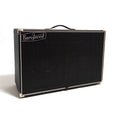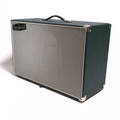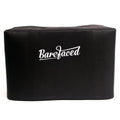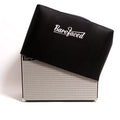Radical 212H / 115 / 112SW
Regular price
£529.00
£899.00
The Radical 212H is the ultimate cab for gigging your big valve amp head. With the unique AVD+ enclosure you don’t need to use a 4x12” cab to get that full power large scale sound, be it for rock, blues, funk, metal, anything - even the loudest bluegrass band on the planet.
And if you don't need the output/tone of a 2x12" you can have this as a custom 1x12" version, the Radical 112SW. This oversized "Super Wide" 1x12" cab is ideal for guitarists wanting to use a full-size head but reduce the output and weight of their rig vs a 2x12".
Or if you want a totally different tonality this is available as a 1x15" version, the Radical 115, with a Celestion G15V-100 Fullback. (Due to the limitations of our Shopify online platform, please order a Radical 112SW in the impedance you want and add the 15" driver to the cart too, then we'll make the 1x15" specific version. We're only able to have 100 different product options and the 115 version takes it over the limit - most annoying!)
If you haven’t heard a Barefaced Diffractor guitar cab you may be sceptical that something this small and light can sound as big and heavy as a 412 - or that it’ll cut through on stage without being as tall. This is where the science comes in:
The AVD+ enclosure uses both sides of the cone to generate sonic output, doubling its acoustic power and dispersing that sound everywhere around the room. No longer will you have to lurk in that narrow cone of tone and finally you’ll be able to consistently get that Goldilocks mix, not too loud, not too quiet, just right - both on stage and in the audience. Gigs are better when you all hear the music as it’s meant to be!
As standard it’s loaded with two Celestion Vintage 30 loudspeakers, giving 120W power handling and buckets of authentic tone. But if your sonic preference differs, you can customise it with any Celestion 12” guitar driver, we offer the whole range.
Specifications
|
Stock - V30 |
Custom - Minimum | Custom - Maximum | |
| Dimensions (H x W x D) |
48cm x 74cm x 31cm 19" x 29" x 12" |
||
| Weight | 16kg / 36lbs | 11kg / 24lbs (Neo Creamback) | |
| Drivers | Celestion Vintage 30 | 20+ custom Celestion 12" choices | (including mixed pairs) |
| Enclosure design | AVD+ | ||
| RMS power handling | 120W RMS | 40W RMS (G12M EVH) | 500W RMS (Neo 250 Copperback) |
| Nominal Impedance | 16 ohm | 4 ohm | (8 ohm also available) |
Features
- Innovative internal design - Barefaced AVD+ enclosure for superior audibility, efficiency and power handling
- Low-cut filter toggle switch
- Choose from the entire range of Celestion 12" speakers*. The iconic Celestion Vintage 30 fitted as standard.
- Either a black or silver cloth grill with white piping.
- British Raging Green or Black in Black tolex.
- Single top strap handle
- Rubber feet on base
- Dual combi 1/4” + speakon sockets
*Additional customisation fee applies. See below.
Questions
Traditional guitar loudspeaker designs.
There are basically two sorts - closed-back and open-backed. Open-backed because they were combos and needed to keep the valves cool and accessible for servicing, closed-back and sealed because that’s how most speakers were made in the 1960s.
How does that affect using them?
The closed-back cabs have narrowing dispersion as frequency increases (a hi-fi speaker uses smaller speakers for higher frequencies to reduce this problem). The open-backed cabs fire sound out of the back as well as the front, so although the dispersion narrows from both front and back in much the same way as the closed-back cab, the sound coming out of the back helps fill the room with mids and highs - but that sound out of the back cancels out most of the lows (due to the inverted phase as the back of the speaker pulls when the front pushes and vice versa). In other words, open-back cabs are easier to hear around the room but the lows are thinner.
How is the Radical 212H different?
From the front it behaves much like a closed or open-backed cab. But the mids and highs coming out of the AVD+ at the back are amplified and dispersed around the room whilst the lows are inverted to match the lows from the front, giving lots more bottom. Basically you get twice the output of a closed back cab with an identical speaker AND even better dispersion and audibility (and far far greater output) than an open-backed cab.
What is AVD+?
You see it when you look at the back of the cab - it’s the Augmented Vent Diffractor plus the secondary tuned reflex port. It’s a unique patented technology that we started developing back in 2013. At low frequencies the AVD and the separate tube port act as tuned vents or Helmholtz resonators, improving efficiency, power handling and output. At mid and high frequencies the AVD acts to diffract, disperse and couple the sound with the room for improved audibility and output especially in rooms with poor acoustics.
The reasons for the AVD+ design on the Radical 212H are twofold - for maximum horizontal dispersion we only want the mids and highs coming from the back of one speaker, so the sound source is narrow compared to the wavelengths - that's why there isn't an AVD behind both 12" drivers. But with just one AVD the cab ends up with too a low a tuning frequency to be optimum for conventional guitar, so we add the secondary port to raise the Helmholtz resonance. At low frequencies both the 12" speakers drive the AVD and the secondary port, it isn't a split enclosure, there is just one air space and tuning frequency.
What is the Lo Cut filter for?
The increased low frequency output from the AVD+ may be too much for some guitarists’ tastes - so you can flick this switch and remove lows at the cab. Doing so not only changes the bass response but also increases the power handling of the cab, lowers the distortion due to motor excursion and reduces the load on your amp’s output stage. This can give you two different sweet-spots of optimum speaker overdrive or break-up and two different sweet-spots of power valve overdrive. If your sound is perfect in rehearsal but too dirty at a louder gig then engaging the Lo Cut filter will clean it up.
Customer feedback
20/06/25 - Radical 212H - UK
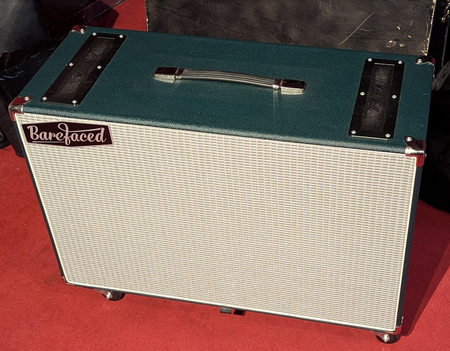
23/04/25 - Radical 212H - USA
Here’s my Barefaced 2x12 in action! It rocks!
Paul
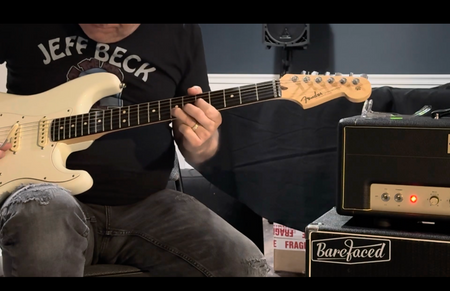
14/04/25 - Radical - USA
I am still loving my Radical cab! This might be a dumb question: to save space on stage (if needed) can I turn it vertical and get the same sound? I am imagining not, but just thought I'd check. Thanks for any info!
Cheers,
Ian
------------------------------------------------------------------------------------
Hi Ian,
Try it and see if it works for you! Put the AVD side at the top. Let us know how you get on! Glad you're still loving it.
Best regards,
Alex















